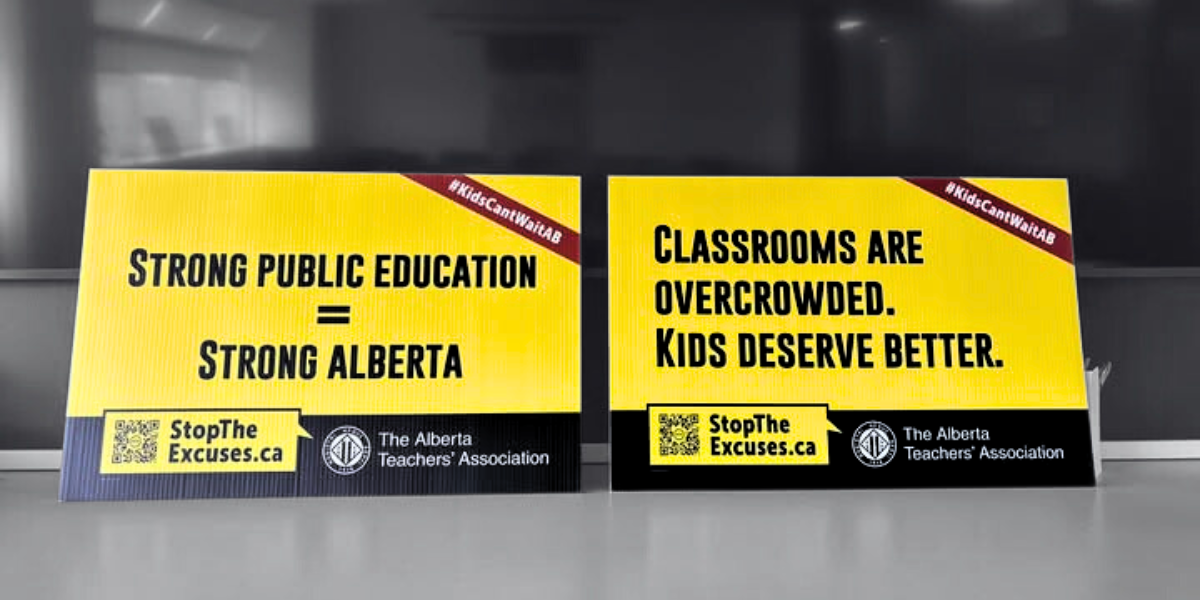The Alberta Teachers (represented by the Alberta Teachers Association) is set to strike on October 6, 2025, unless a deal is reached before then.
This is Alberta’s largest strike threat ever, with 51,000 teachers set to hit the picket lines. In June, roughly 39,000 teachers voted 94.5% in favour of strike action if a deal could not be reached. ATA President Jason Schilling, said, “For too long, teachers have been propping up a system that is under-resourced and overburdened. We are expected to do more with less every year.”
Teacher salaries have not kept up with inflation, with wages increasing by just 5.75% over the past decade. Classrooms are overcrowded with hundreds of schools’ enrollment exceeding their capacity. Student supports are lacking and teachers are working in hallways. The strike is also intertwined with controversial education policies from the Alberta government, including gender identity rules and book bans. Alberta faces a projected $6.5 billion deficit, making negotiations even more tense.
The ATA rejected a mediator’s recommendations for a new provincial collective agreement in May. The recommendations included a general wage increase of 3% per year, a process for teachers to deal with classroom complexities and $400 million in classroom improvements. Since then, the government has offered to hire 3,000 new teachers. While Schilling said that adding those teachers is a start (he estimated with population growth 5,000 would be a more appropriate number), realistically “it doesn’t begin to meet the needs created by years of neglect and record enrolment growth…Government is well within their financial capacity to meet the needs of teachers and they’ve given themselves a tight fiscal window.”
Alberta’s per student funding is amongst the lowest in Canada, according to national statistics cited by the union. Class sizes have ballooned to 40 students per class, and that number is becoming the norm in many schools. Some students are learning in hallways and libraries due to lack of space. Teachers are calling for more education assistants and mental health supports to manage increasingly complex classrooms.
Alberta uses a three-year weighted average enrollment to determine funding, which critics say delays support for rapidly growing schools. It is government policy that spending increases must be lower than the cumulative effects of inflation and population growth. These policies have left Alberta students among the least funded in the country.
In short, Alberta has gone from being one of the top spenders to the lowest-ranked province in public education funding. That’s a major factor fueling the current teacher unrest. The government must act promptly to avoid disruption to classes, with over 51,000 teachers potentially walking off the job, affecting roughly 850,000 students across public, Catholic, and francophone schools. If this strike goes ahead, it could be Alberta’s largest teacher walkout since 2002. Solidarity with the ATA for fighting for better public education in Alberta.
Did you like this article? Help us produce more like it by donating $1, $2, or $5. Donate

